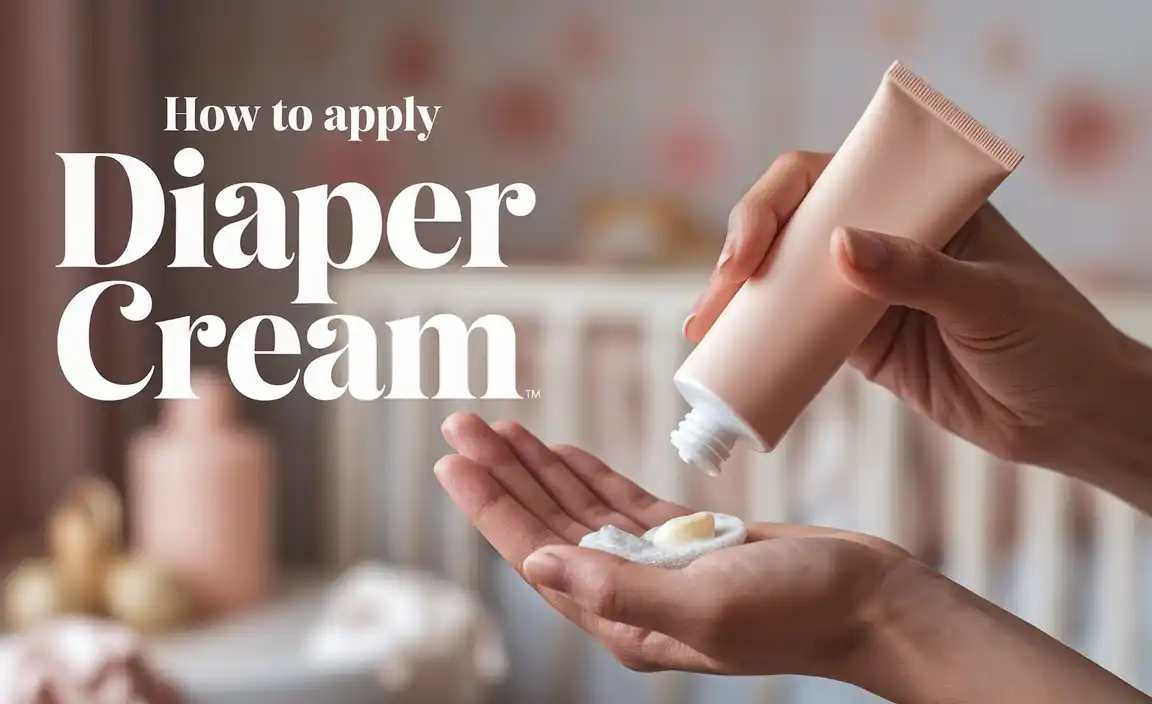Imagine you’re exploring a lush, green jungle. Suddenly, an itch turns into a rash. Oops! Did you forget your travel first aid essentials? When you’re far from home, having the right items can save your trip. Did you know that a simple bandage can be your best friend on an adventure?
Ever stepped on a sharp rock and wished for a band-aid? You’re not alone! Many travelers find themselves in sticky situations, whether they’re hiking up a mountain or strolling through city streets. How cool would it be to handle such surprises without worry?

So, what should you never travel without? A mini first aid kit packed with essentials! From soothing ointments to trusty tweezers, these items help you stay prepared. Travel safely and keep exploring without a hiccup!
Travel First Aid Essentials: Must-Have Items For Every Trip

Travel First Aid Essentials
Imagine you’re hiking in the woods and you trip. Ouch! What do you need? A good travel first aid kit. This pack helps you with cuts and bruises. It includes band-aids, antiseptic wipes, and pain relievers. If a bee stings you, no worries! You’ll have anti-itch cream. Emergencies happen anytime. Being ready is simple and smart. It’s like carrying a superhero toolbox, just for you.
Understanding the Importance of a Travel First Aid Kit
Assessing potential health risks during travel. The peace of mind provided by being prepared.
Why is a Travel First Aid Kit Important?
If you’re traveling, you might face health risks. Cuts, insect bites, or upset stomachs can happen. A good first aid kit helps you handle these problems. It gives peace of mind because you know you’re ready for any small emergency. When prepared, travel is less stressful and you enjoy it more without worrying. Being prepared keeps you and your loved ones safe.
What Are the Key Components of a Travel First Aid Kit?
A basic travel kit should include:
- Band-aids and gauze
- Antiseptic wipes
- Prescription medications
- Thermometer
- Pain relievers
How Does a First Aid Kit Provide Peace of Mind?
Having a first aid kit means you can quickly respond to minor injuries. Immediate care can make a big difference. Knowing you can help yourself or others gives a sense of calm. It’s like a security blanket for travels.
Can a Travel First Aid Kit Really Make a Difference?
Yes! Even small kits can prevent a simple cut from getting worse. Timely care reduces infection risk. It lets travelers handle emergencies until they can seek professional help. Safety is always a priority.
Essential Items for Every Travel First Aid Kit
Basic first aid supplies: bandages, antiseptic wipes, gauze. Necessary medications: pain relievers, antihistamines, antidiarrheal.
Before jetting off on an adventure, packing a first aid kit is a smart move. Imagine it as your travel buddy that never bails out! Essential items like bandages, antiseptic wipes, and gauze are your tiny heroes, ready to save the day. If a boo-boo lands, these supplies can wrap it up! Plus, medications such as pain relievers, antihistamines, and antidiarrheals are the squad for sneaky fevers or tummy troubles. Did you know? Around 80% of travelers encounter minor health issues, so these are a must.
| Basic Supplies | Purpose |
|---|---|
| Bandages | Protects cuts and scrapes |
| Antiseptic Wipes | Cleans wounds |
| Gauze | Stops bleeding |
Another common question is, “What medications should I pack?” The answer? Bring pain relievers for headaches, antihistamines for sneezes, and antidiarrheals for belly woes. Keep it simple and travel with peace of mind! As the old saying goes, “Better safe than sorry,” and in this case, it can mean avoiding pesky travel mishaps.
Customizing Your Kit for Different Destinations
Adapting your kit for tropical climates vs. mountainous regions. Additional precautions for remote or offthegrid locations.
Ready for adventure? Your first aid kit should be too! If you’re heading to a sunny beach, think sunscreen and aloe for those pesky burns. In the mountains, pack for bumps and bruises. For off-the-grid spots, add water purifiers and flashlights. Always match your kit to where you’re going, so you’re not stuck using band-aids as snowshoes!
| Environment | Essentials |
|---|---|
| Tropical Climates | Sunblock, insect repellent, hydration salts |
| Mountainous Regions | Bandaids, cold packs, altitude sickness meds |
| Remote Locations | Water purifier, flashlight, signal mirror |
Special Considerations for Traveling with Children
Childfriendly medication and supplies. Addressing common illnesses and injuries in children while traveling.
Traveling with kids can be an adventure. Keeping a first-aid kit handy is smart. Include child-friendly medication like chewable tablets or liquid forms. Pack items to address common illnesses. For instance, fever reducers and tummy relief medicines are essential. Consider pain relief patches instead of pills.
- Bandaids
- Antiseptic wipes
- Thermometer
- Sunblock
Prevent injury with safety gear like helmets. Always double-check medications are child-safe. Prepare before you go to make travel fun and safe!
### **How can you ease travel sickness in children?** Offer light snacks and stay hydrated. Ginger cookies help with nausea. Fresh air also works wonders. Keep motion sickness bands ready. They apply gentle pressure to ease symptoms.
First Aid for Common Travel Scenarios
Treating minor cuts, burns, and sprains. Managing traveler’s diarrhea and food poisoning.
Accidents can happen anytime during travels, but don’t worry! For minor cuts and scrapes, wash the area with clean water and apply a bandage. Burns need cool water treatment and maybe a bit of laughter therapy to ease the pain. A bag of ice works wonders on sprains. Now, if you find yourself running to the bathroom more often than to the beach, it might be traveler’s diarrhea. Stay hydrated and avoid greasy foods. Your stomach will thank you! And remember, check local places for medicine if your tummy does somersaults due to food poisoning.
| Scenario | First Aid Tip |
|---|---|
| Cuts & Scrapes | Clean with water, bandage |
| Burns | Cool water, no ointments needed |
| Sprains | Ice, rest, elevate |
| Traveler’s Diarrhea | Stay hydrated, avoid greasy food |
| Food Poisoning | Drink fluids, see a doctor if needed |
As they say, “Travel is fun until the toilet becomes your new best friend!” Always pack your first aid kit and trust your instincts. Traveling smart means being prepared, not scared!
Recommended Travel First Aid Brands and Products
Toprated products for reliability and convenience. Travelsize items that fit easily into luggage.
When traveling, having the right first aid kit can be a lifesaver. Compact products fit well in any luggage and are essential for safety. Here are some top recommendations:
- Trek & Travel wipes ensure cleanliness anywhere.
- Neosporin provides effective wound care.
- Band-Aid travel packs are ideal for cuts and scrapes.
- Benadryl tablets help with allergy relief quickly.
These items are not just trusted, but also convenient. They save space and offer the reliability you need while exploring new places.
### **What should be in a travel first aid kit?** A good travel first aid kit should include items like adhesive bandages, antiseptic wipes, pain relievers, and any personal medications. It’s smart to have a small flashlight and tweezers too. Preparedness on the go means being ready for small injuries or sudden ailments. ajout Could ask yourself, “Am I ready for an emergency?” when packing. They ensure peace of mind so you can enjoy your fun journey!
Tips for Organizing and Packing Your Travel First Aid Kit
Spacesaving techniques and packaging solutions. Ensuring accessibility and quick retrieval of items during emergencies.
Want to save space while packing your first aid kit? Imagine a game of Tetris where every item has its spot. Use small containers for pills and tiny zip-lock bags for bandages. These keep stuff neat and tidy. Make sure to keep essentials at the top for quick grabs during emergencies. Nothing’s worse than digging for a bandage while yelling, “Where is it?” Ensuring quick access can make all the difference.
| Items | Packaging Ideas |
|---|---|
| Pills | Small containers |
| Bandages | Tiny zip-lock bags |
Keeping items organized helps in stressful times. Be the hero who’s always ready, like a travel-first responder! Remember, easy access equals less stress. Certain statistics say, “Be prepared!” Making careful choices ensures all items are within reach.
Maintaining and Updating Your First Aid Kit
Regularly checking expiration dates on medications. Restocking used or outdated supplies before each trip.
Keeping your first aid kit updated is crucial for safe travels. Always check the expiration dates on medications. They lose power if expired. Before each trip, make sure you restock any used or outdated supplies. It’s like packing snacks; you don’t want empty bags!
- Check meds for expiration dates.
- Replace old supplies and used items.
Safety while traveling is key. A ready-to-go kit means you’re prepared for any bumps or bruises during your trips!
Why is it important to check expiration dates on medications?
Medications lose their effectiveness once they expire. Using them could be risky as they may not work properly. Always replace them with fresh supplies to ensure safety during your travels.
How often should you restock your first aid kit?
Restock your kit before each trip or every 6 months. Frequent checks ensure all items are in working condition and nothing crucial is missing for emergencies.
Conclusion
Travel first aid essentials help you stay safe on trips. Pack band-aids, antiseptic wipes, and pain relievers. Don’t forget any personal medications. Being prepared means you can handle minor injuries or illnesses. Now, review these essentials and practice packing a first aid kit for your next adventure. For more tips, explore travel safety guides and resources.
FAQs
What Are The Must-Have Items In A Basic Travel First Aid Kit For International Trips?
When you go on a trip, pack a basic first aid kit. Include band-aids for cuts and scrapes. Bring antiseptic wipes to clean wounds. Don’t forget pain relievers like aspirin. Always have some tweezers for splinters or bug bites.
How Can I Customize My Travel First Aid Kit To Suit Different Destinations And Climates?
To make your travel first aid kit fit your trip, think about where you’re going. If you’re visiting a hot place, pack extra sunscreen and water. For cold places, include lip balm and hand warmers. In places with bugs, add bug spray to keep from getting itchy bites. Always make sure to have band-aids, tissues, and any medicines you often use.
What Are The Best Practices For Storing And Organizing First Aid Supplies While Traveling?
When you travel, keep first aid supplies in a clear, waterproof bag. Put the most important items, like band-aids and antiseptic wipes, on top so you can find them fast. Label everything, so you know what each item is for. Keep the bag in an easy-to-reach spot in your travel bag. Always check the kit before you leave to make sure nothing is missing.
How Can I Ensure My Travel First Aid Kit Complies With Airline And International Regulations?
First, ask an adult to help you check airline rules online. They change sometimes, so it’s important to know them. Put liquids in small bottles under 100 milliliters (ml) in a clear, sealed bag. Keep sharp things, like scissors, away from your plane bag. Finally, check the rules for each country you visit.
What Additional First Aid Items Should I Consider When Traveling With Children Or Elderly Individuals?
When traveling with kids or older people, pack extra first aid items. Bring band-aids for cuts and scrapes. Pack medicine for fevers and upset tummies. Sunscreen and insect repellent can keep them safe. Don’t forget a small flashlight and extra batteries for emergencies.







